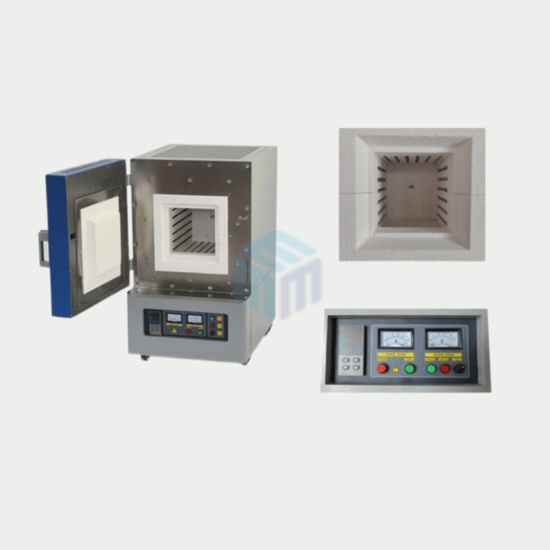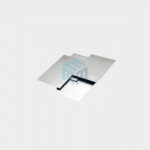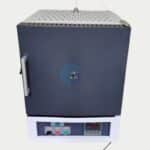- Industrial Furnaces
Industrial furnaces are designed for large-scale applications and typically operate at higher temperatures to process metals, glass, ceramics, and other materials. They are robust, high-capacity, and optimized for continuous, high-demand production environments.
Types of Industrial Furnaces
Blast Furnace
- Application: Primarily used in the steel industry for smelting iron ore into molten iron.
- Size and Capacity: Capacities can exceed 1,000 tons of molten iron per day.
- Temperature Range: Up to 2,200°C (3,992°F).
- Benefits: Efficient for large-scale metal production.
- Limitations: High energy consumption, environmental impact due to carbon emissions.
Induction Furnace
- Application: Melting and refining metals like steel, copper, and aluminum.
- Temperature Range: 1,200°C to 1,600°C (2,192°F to 2,912°F).
- Size and Capacity: Typically ranges from 1 to 100 tons per batch, with larger systems for high-volume operations.
- Benefits: Precise temperature control, high efficiency, minimal emissions.
- Limitations: Requires specialized setup and significant electrical power.
Rotary Kiln Furnace
- Application: Used in cement, lime, and refractory manufacturing industries.
- Temperature Range: 1,000°C to 1,450°C (1,832°F to 2,642°F).
- Size and Capacity: Lengths can exceed 100 meters with capacities ranging from 50 to 1,000 tons per day.
- Benefits: Continuous processing, large capacity.
- Limitations: High fuel consumption, requires extensive maintenance.
Electric Arc Furnace
- Application: Melting scrap metal, primarily in the steel recycling industry.
- Temperature Range: 1,300°C to 1,800°C (2,372°F to 3,272°F).
- Size and Capacity: Can range from 5 to 400 tons per charge, depending on the size of the furnace.
- Benefits: Efficient for recycling, can reach high temperatures quickly.
- Limitations: High electricity consumption, potential for noise and dust pollution.
Annealing Furnace
- Application: Softening metals or glass through heat treatment to improve workability.
- Temperature Range: 200°C to 1,100°C (392°F to 2,012°F).
- Size and Capacity: Often ranges from a few hundred to several tons, depending on the design.
- Benefits: Enhances material properties, prevents metal cracking.
- Limitations: Requires precise temperature control; often a slow process.
- Laboratory Furnaces
Laboratory furnaces are designed for small-scale testing, research, and material development in labs. They offer precise temperature control, safety features, and are compact for benchtop or small-space applications.
Types of Laboratory Furnaces
- Application: Heating samples in ceramics, chemical, and metallurgical research.
- Size and Capacity: Typically has a volume of 1 to 5 liters, suitable for small sample sizes.
- Temperature Range: Up to 1,200°C (2,192°F).
- Benefits: Clean heat source, ideal for ashing and incineration.
- Limitations: Limited sample size, cannot be used for large-scale production.
Tube Furnace
- Application: Conducting thermal processing in a controlled atmosphere, often for material synthesis and oxidation.
- Temperature Range: 1,100°C to 1,800°C (2,012°F to 3,272°F).
- Size and Capacity: Usually has a tube length of 60 to 150 cm, with diameters ranging from 2 to 10 cm.
- Benefits: Excellent for creating precise, controlled environments.
- Limitations: Small capacity; requires careful handling of gases.
Ashing Furnace
- Application: Determining the mineral content in food, fuel, and other organic materials by combusting the organic matter.
- Temperature Range: 600°C to 1,100°C (1,112°F to 2,012°F).
- Size and Capacity: Generally ranges from 1 to 3 liters, suitable for small sample analysis.
- Benefits: Accurately measures ash content, compact design for lab work.
- Limitations: Limited to small samples; only suitable for specific applications.
Vacuum Furnace
- Application: Heat treatment in a vacuum environment, commonly used in metallurgy and material science research.
- Temperature Range: Up to 1,600°C (2,912°F).
- Size and Capacity: Typically designed for small batches, with chamber sizes from 10 to 100 liters.
- Benefits: Eliminates oxidation, ideal for sensitive materials.
- Limitations: Expensive, requires maintenance and special equipment to handle the vacuum.
Chamber Furnace
- Application: General-purpose lab furnace for heating, aging, or sterilizing samples.
- Temperature Range: 100°C to 1,200°C (212°F to 2,192°F).
- Size and Capacity: Usually has a capacity of 20 to 100 liters, allowing multiple samples.
- Benefits: Versatile; can handle multiple samples at once.
- Limitations: Limited to lower temperature ranges compared to other lab furnaces.






